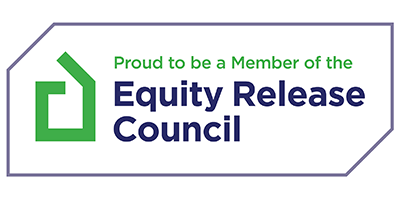In this article
A bridging loan works by offering short-term finance to cover a funding gap.
This might be when you’re buying a new property before selling your current one, raising funds for an investment, or need fast access to capital for other property-related reasons.
It can also be used alongside an existing mortgage if there’s enough equity in place. The process starts with a mortgage broker looking at your plans and financial position.
If a bridging loan is the right fit, you’ll be given a decision in principle.
After that, the full application gets underway, including legal checks, a property valuation, and a review of documents such as bank statements and proof of income.
Once approved, the money is typically transferred within two to three weeks.
Your advisor will also help you plan how the loan will be repaid, whether through a sale, investment return, or a remortgage after any work on the property is complete.
Are Bridging Loans a Good Idea?
In the right situation, bridging loans can offer a practical way to keep things moving. Their speed and flexibility are what make them appealing, especially when timing is tight or other options aren’t available.
They’re often considered when quick access to funds is key, but they do come with higher costs compared to longer-term finance.
Interest is charged monthly, and there can be extra charges such as arrangement or exit fees, so it’s important to understand the full cost upfront. The key is having a clear plan in place.
If you’re confident in how and when the loan will be repaid, whether through a sale, remortgage or another route, bridging finance can work well.
That said, if your exit plan is uncertain or there’s a risk of delays, it might not be the right fit.
A mortgage broker with experience in bridging finance can talk you through your options and help you weigh up whether this route makes sense for what you’re looking to achieve.
How Do I Get a Bridging Loan?
The easiest way to secure a bridging loan is through a specialist mortgage broker.
Their experience with lending criteria and relationships with lenders can help speed things up, reduce the risk of delays, and improve your chances of approval.
Brokers will also assess whether a bridging loan is truly the best fit for you. If a more cost-effective alternative is available, they’ll highlight that too.
Depending on your situation, you might be better suited to a residential mortgage, buy to let product, age 50+ mortgage solution, secured loan, or interest-only option.
A key part of any bridging loan application is the exit plan. Lenders need to see how the loan will be repaid.
Common repayment routes include selling the property, remortgaging once any improvements are complete, drawing from investments or pensions, or receiving inheritance funds.
Your broker will guide you through the process from start to finish, helping you prepare everything you need and matching you with a suitable lender.
Having this support avoids costly mistakes such as paying duplicate legal or valuation fees if you go with the wrong lender.
To apply, you’ll need to provide documentation, including bank statements, ID, proof of address, income details, and information about your assets and liabilities.
You may also be asked for a business plan, schedule of works, or a mortgage agreement in principle, depending on your plans for the property.
With the right advice and preparation, getting a bridging loan can be straightforward.
How Can a Bridging Loan Help With Downsizing?
Downsizing can bring real benefits, from reducing outgoings to finding a home that better suits your lifestyle. But coordinating a sale and purchase isn’t always straightforward.
A bridging loan gives you the freedom to buy your next property first, then sell your current home, avoiding delays and pressure from property chains.
This approach is especially helpful if the right home comes up before your existing one has sold. It allows you to secure it without missing out, and move at your own pace. In some cases, downsizing might not involve moving at all.
Instead, a bridging loan can provide fast access to funds for home improvements, whether that’s adapting your space for ease of living or upgrading for comfort and efficiency.
Once your sale is complete and the loan is repaid, you may want to look at longer-term options like a retirement interest-only mortgage or another product suited to age 50+ borrowers.
These can help manage future expenses while keeping you settled in your new home.
Our team of mortgage advisors can help you explore how these solutions fit together and support you through each step of your move.
How Much Does a Bridging Loan Cost?
Bridging loan costs can vary, but there are a few key things to factor in: arrangement fees, legal and valuation costs, broker support, interest, and sometimes an exit fee.
Arrangement fees are usually between 1% and 2% of the loan and are often added to the total amount. A property valuation will be needed and is paid upfront.
Legal fees tend to be higher than with standard mortgages, and you’ll usually cover the lender’s legal costs as well.
Interest is charged monthly, and some borrowers choose to let it roll up and pay it all at once when the loan is repaid.
A few lenders may also apply an exit fee. It’s always worth reviewing all of these costs together, so you can clearly see how they’ll fit into your overall plans.
How Fast Can I Get a Bridging Loan?
With the right preparation and support, bridging loans can be arranged in as little as 48 hours. In most cases, the process takes between one to three weeks, depending on how straightforward your situation is.
The speed of your application often comes down to how quickly you provide documents, the lender’s turnaround time, and how efficiently the legal work is handled.
Delays usually happen when paperwork is missing, valuations take longer, or legal issues arise.
Loan size can also play a part. Smaller amounts are often processed more quickly, while larger loans may involve more detailed checks.
Choosing a lender known for fast completions, and working with a mortgage broker who understands how to keep everything on track, can make a big difference.
Having the right professionals around you helps avoid setbacks. From solicitors to valuers, choosing people who are used to working with bridging finance will help keep the process running smoothly.
If time is short, we’re here to help you get everything in place and secure your funding as quickly as possible.
Bridging Finance Timeframes
Explained in 27 seconds
Find more videos like this on MoneymanTV
Am I Eligible for a Bridging Loan?
To qualify for a bridging loan, you’ll usually need enough equity in a property to secure the loan.
Lenders will also look at your income, credit history, and your exit strategy, which is how you plan to repay the loan once your plans are in place.
That might mean selling a property, arranging a remortgage, or using funds from another source. The more straightforward and realistic your plan is, the more likely you are to be approved.
Bridging loans tend to come with higher costs than standard mortgages, and lenders may apply more detailed checks.
This is why it helps to speak with a mortgage advisor who understands the process. They can look at your circumstances, explain your options, and help make sure you’re applying for the right product.
Can I Get a Bridging Loan to Pay Inheritance Tax?
Yes, bridging loans can be used to pay inheritance tax, particularly when the estate includes property that has not yet been sold.
If you’re inheriting a home but don’t have the cash to settle the tax bill, this type of finance offers a practical solution.
Since inheritance tax usually needs to be paid before probate is granted, delays can quickly build up if funds aren’t available.
A bridging loan gives you access to the money you need without rushing to sell the property or using personal savings.
The loan is typically repaid once the estate is settled, either by selling the property or switching to a standard mortgage.
It also gives families more time to decide what to do with the home, whether that means keeping it or selling later when the time feels right.
To arrange a bridging loan, you’ll need a property to secure it against. This is often the inherited home, but it could also be one you already own.
As long as there’s enough equity, it can be used to raise the funds required. If you’re thinking about this route, it’s worth speaking with a mortgage advisor.
They can help you prepare your application, explain your options, and ensure everything is handled with care.
If you also have questions about the tax side, you might want to speak with a qualified advisor who deals with inheritance matters.
Can a Bridging Loan Be Used for Renovations?
Yes, bridging loans can fund renovation projects, whether you’re improving a future home, updating a buy to let, or adding value before selling.
They offer fast, flexible finance where traditional options may not be suitable. The right loan depends on your plans.
If you or a family member will live in the property after the work is complete, regulated bridging finance may apply.
For investment projects like buy to let or resale, unregulated loans are often more appropriate. Residential bridging loans are also available for both personal and investment use.
These loans are especially useful for auction properties needing urgent work. Borrowers can often opt for interest-only payments, repaying the loan once the property is sold or refinanced.
To apply, you’ll need a renovation plan, a clear exit strategy, and supporting documents. A broker can help match you with a suitable lender and handle the process smoothly.
If you’re planning a renovation and need quick funding, our bridging mortgage advisors are here to help.
Can I Get Finance for an Uninhabitable Property?
Yes, bridging loans can offer a practical route to finance when a property isn’t suitable for a traditional mortgage.
Whether it’s been stripped back, needs extensive repairs, or simply isn’t fit to live in, bridging finance can help secure the property and fund the work needed to bring it up to standard.
The right loan will depend on your plans. If you’re planning to live in the property once it’s renovated, a regulated bridging loan might apply.
If it’s for rental or resale, an unregulated option could be more appropriate. Residential bridging loans cover both, depending on how the property will be used.
Auction properties often fall into this category too, where a quick turnaround is needed. Bridging loans are commonly used here to meet the deadline and start work immediately.
To secure this type of finance, you’ll need a clear plan showing how the property will be made habitable and how the loan will be repaid.
A valuation and legal checks will also be part of the process. Working with a broker who understands this area can help speed things up and match you with lenders familiar with uninhabitable properties.
If you’re considering buying a property that needs serious work, our bridging mortgage advisors can help you explore your options and find the right solution for your project.
Speak to an Advisor – It’s Free!
Schedule a free callback from one of our experts today.
- All situations considered
- Transparent and honest mortgage advice
- We search 1000s of deals
Our customers rate us 4.9/5
How Easy Is It to Get a Bridging Loan?
Bridging loans are often easier and quicker to arrange than traditional mortgages, especially when you work with a broker who understands the market.
While every case is different, most lenders focus on the property’s value, your repayment plan, and whether the paperwork is in place.
You’ll usually need enough equity in the property you’re securing the loan against, along with a clear exit strategy.
Proof of income and a good credit history can help, though some lenders are more flexible depending on the circumstances.
The process typically includes an initial chat with a mortgage broker, followed by an application, property valuation, and legal checks. Once approved, funds are released quickly, often within a couple of weeks.
It’s important to be aware of the higher costs that can come with bridging finance, including fees and interest charged monthly.
Having a broker on your side helps you avoid delays, match with the right lender, and move forward with confidence.
How Do I Find the Best Bridging Loans?
Finding the best bridging loan depends on matching the right product to your plans.
With interest rates, fees, loan terms, and lender criteria varying widely, it’s not just about the lowest rate. It’s about finding the option that fits your situation.
A mortgage broker who specialises in bridging finance can make this much easier. They compare lenders, handle the paperwork, and help avoid delays, especially when time is tight.
When weighing up options, it’s important to look beyond the rate. Arrangement, valuation, and exit fees can all affect the overall cost.
You’ll also want to consider the loan-to-value ratio, repayment terms, and whether the loan has a fixed repayment date or more flexibility.
Some bridging loans are secured as a first charge against a property with no existing mortgage, while others sit behind an existing one as a second charge.
The type of security offered will influence both eligibility and cost. Before applying, get clear on your objectives, repayment strategy, and budget.
Having your documents ready, including proof of income and a professional valuation, will help the process move smoothly.
When Should You Consider a Bridging Loan?
Bridging loans can be a useful option when timing is key and access to funds is needed quickly. One of the most common scenarios is when you’ve found a new home but haven’t yet sold your current one.
A bridging loan can help you secure the purchase without waiting for your sale to complete, giving you the freedom to move forward without delay.
They’re also a practical solution for auction purchases, where completion is required within a set timeframe.
Traditional mortgages often can’t move fast enough, but a bridging loan can give you the edge when a quick decision is needed.
Property developers often turn to bridging loans during the early stages of a project, using them to buy land, start planning work, or cover upfront building costs.
They can also be useful for refurbishing a property, providing the funds to complete improvements before refinancing or selling.
Second charge bridging loans may be worth considering if you already have a mortgage and need additional funds.
They let you release equity without disturbing your existing deal, making them a flexible option for investors and homeowners alike.
Whether it’s for a move, a renovation, or an opportunity that needs acting on quickly, bridging loans can help unlock the funding needed to keep things moving.







